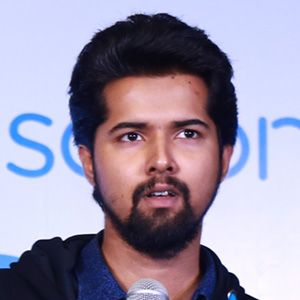
Subscribe to our Blog
We're committed to your privacy. SayOne uses the information you provide to us to contact you about our relevant content, products, and services. check out our privacy policy.

Jibu JamesMay 30, 202510 min read

Generating table of contents...
Retail is changing fast. Customers expect more than just low prices-they want offers that make sense for them, right now. Traditional discounts and mass promotions aren’t enough anymore. Retailers need smarter ways to connect with shoppers, cut through the noise, and deliver real value.
This is where generative AI steps in. By using data and automation, GenAI helps retailers move beyond guesswork and create offers that actually matter to each customer.
Generative AI in retail refers to the use of artificial intelligence models that can create new content, automate tasks, and personalize customer experiences based on data.
In retail, GenAI is used to analyze large volumes of customer data-like purchase history, browsing patterns, and social media activity-to deliver more relevant offers, discounts, and product recommendations.
Retailers use Generative AI to automate content creation, such as writing product descriptions or generating personalized marketing emails at scale.
This helps them reach customers with messages that feel tailored rather than generic, which can improve engagement and reduce brand fatigue.
GenAI also powers chatbots and virtual assistants that answer customer questions, recommend products, and even help with order tracking or returns.
Beyond customer-facing tasks, GenAI streamlines internal operations. It helps with inventory management, demand forecasting, and trend analysis, allowing retailers to make faster and better-informed decisions.
❝GenAI isn’t just about making retail operations more efficient-it’s about transforming the customer experience. With these tools, we can predict which products will be in demand, optimize stock levels, and cut down on waste. But more importantly, we’re enabling features like virtual try-ons, personalized style recommendations, and real-time support, making shopping easier and more personal for every customer.
As a result, retailers can improve conversion rates, increase customer loyalty, and stay competitive in a rapidly changing market
Traditional discounting and promotions have been around forever, right? You see the same old “Buy One, Get One Free” or “20% Off Everything” signs at almost every store.
But here’s the thing: these offers treat everyone the same, no matter what you actually like or need.
With Traditional Discounting and Promotions tactics, Most shoppers have learned to wait for big sales. Why pay full price when you know there’s a discount coming next weekend?
This habit can mess with sales patterns and make it tough for retailers to predict demand. And when everyone gets the same deal, it’s hard to reward loyal customers or attract new ones in a meaningful way.
Another issue? Blanket discounts can eat into profits. Retailers end up giving away margin to people who might’ve bought at full price anyway. Plus, these offers don’t always move the products that actually need to go-like last season’s shoes or that odd color no one wants.
Instead, bestsellers get scooped up at a discount, and the slow movers still sit on the shelf.
❝Ever wonder why your inbox is full of generic promo emails? That’s because traditional promotions are easy to automate, but they’re not smart. They don’t use your shopping history or preferences, so they often miss the mark. And let’s not forget, too many irrelevant offers can annoy customers and push them away.
Everyone's used to personalized feeds and recommendations, these old-school tactics just don’t cut it. People want deals that make sense for them, not just whatever’s on clearance. So, while traditional discounting has its place, it’s clear there’s room for something smarter-something that actually listens to what customers want.
Lets see how you can personalize discounts and offers usings Generative AI
Real-time data retrieval transforms how businesses deliver personalized offers by combining vector similarity search with large language models (LLMs). This approach lets companies analyze customer behavior instantly, match it to relevant promotions, and generate tailored messaging-all while keeping pace with shifting preferences.
Vector databases convert customer profiles, purchase histories, and browsing patterns into numerical representations (vectors).

When a user interacts with a platform-say, searching for lets say "weekend hiking gear"-the system scans millions of stored vectors in real time to find the closest matches.
❝By using Qdrants Vector database for our retail clients We have slashed response times to under 30 milliseconds, ensuring offers arrive while the customer is still engaged.
LLMs then use these up-to-date vectors to craft context-aware messages. Instead of generic discounts, a customer might receive, "Your last hike was in the Rockies-check out our new trail-ready backpacks." By pulling fresh data from vector databases, LLMs avoid outdated suggestions and maintain relevance.
Why it matters
This synergy cuts through the noise of mass promotions. Customers get what they actually want, businesses see higher conversions, and nobody wastes time on mismatched ads. The tech isn’t futuristic-it’s already here, quietly powering the offers that feel "just right."
Predictive analytics uses customer data-like purchase history, browsing patterns, and demographics-to forecast what customers are likely to do next. Instead of waiting for customers to act, businesses can use these insights to get ahead and deliver offers or discounts that match what each customer actually wants.
Here’s how it works, stripped down:
1. Companies collect data from different sources: online activity, past purchases, and even customer support interactions.
2. Machine learning models analyze this data to spot patterns. For example, the model might notice that a customer who browses certain products late at night is likely to buy them within a week-if nudged with a timely discount.
3.The system then segments customers based on predicted behaviors: who’s likely to buy, who’s at risk of leaving, and who might respond to a special offer.
With these predictions, businesses can automate sending relevant promotions or discounts-before the customer even asks. For example, a retailer might offer a discount on a product a customer is likely to run out of soon.
❝This is not just about pushing more offers. It’s about relevance. Predictive analytics helps avoid generic, scattershot promotions. Instead, customers get deals that fit their needs and timing, which leads to higher engagement and more conversions.
Real-world results back this up. Retailers using predictive analytics to personalize offers have seen significant increases in repeat purchases and customer satisfaction.
One of our clients, a fashion retailer, reported a 20% boost in repeat purchases after sending targeted offers based on predicted preferences.
predictive analytics lets brands move from reactive to proactive. The right offer, at the right time, to the right customer-without guesswork.
By dividing tasks into specialized AI agents connected through LangGraph's modular architecture, businesses can handle offer generation, validation, and delivery with precision and scale-without getting bogged down in technical complexity.
Specialized AI agents act as a team of experts. One agent analyzes customer purchase history and browsing behavior to draft initial offers. Another cross-references real-time inventory levels to ensure proposed discounts align with stock availability.
A third agent checks compliance with regional pricing regulations or loyalty program terms. This division of labor ensures offers are relevant, feasible, and legally sound from the start.
The system uses a supervisor agent to coordinate validation. When an offer is generated, it routes details to:
This layered validation acts like a quality-control assembly line, catching issues human teams might miss during manual reviews.
Approved offers are handed to delivery agents optimized for specific channels:
Each delivery agent tracks engagement metrics, feeding data back to the generation team to refine future offers-a self-improving loop.
Why Retailers Care
LangGraph’s architecture lets retailers start small-perhaps automating flash sales first-then expand to loyalty rewards or seasonal campaigns by plugging in new agent teams. The system grows as the business does, maintaining control while increasing sophistication.
Generative AI enables businesses to adjust prices and offer discounts tailored to individual customer profiles and their buying history. This approach moves beyond one-size-fits-all pricing.
By analyzing data such as past purchases, browsing habits, and demographics, retailers can create detailed customer profiles. Generative AI processes this information to identify patterns and preferences for different customer segments.
How it Works:
Individualized Pricing: Algorithms can adjust prices in real-time. For instance, a customer who frequently looks at a particular brand of headphones might see a slight price adjustment on those items over time. Conversely, loyal customers might receive special discounts on products they often buy or are likely to be interested in.
This use of customer data and AI helps retailers create more relevant shopping experiences, which can lead to increased sales and customer loyalty.
E-commerce platforms and even physical stores can use this strategy, with brick-and-mortar retailers employing electronic shelf labels to display targeted discounts on slow-moving items.
Many retailers struggle to make their offers stand out in a crowded digital marketplace. Generic discounts often miss the mark, leading to wasted marketing spend and lost opportunities for real customer engagement.
At SayOne, we specialize in building GenAI-powered solutions that help retailers deliver the right offer to the right customer at the right time.
Our team has hands-on experience in designing and deploying AI-driven personalization engines that analyze customer behavior, segment audiences, and automate dynamic pricing strategies. We don’t just implement technology-we partner with you to understand your business, your customers, and your goals.
When you work with SayOne, you get more than technical expertise. You get a team that’s committed to transparency, reliability, and measurable results. Our track record includes successful projects with retailers across the globe.
If you’re ready to move beyond guesswork and unlock the power of GenAI for your business, outsource your next retail project to SayOne or hire our expert team. We’re here to help you turn customer data into real value-simply, securely, and at scale.
Contact us now!

We're committed to your privacy. SayOne uses the information you provide to us to contact you about our relevant content, products, and services. check out our privacy policy.

About Author
Jibu James is the Team Lead at SayOne Technologies. He is passionate about all things related to reading and writing. Check out his website or say Hi on LinkedIn.

We collaborate with visionary leaders on projects that focus on quality